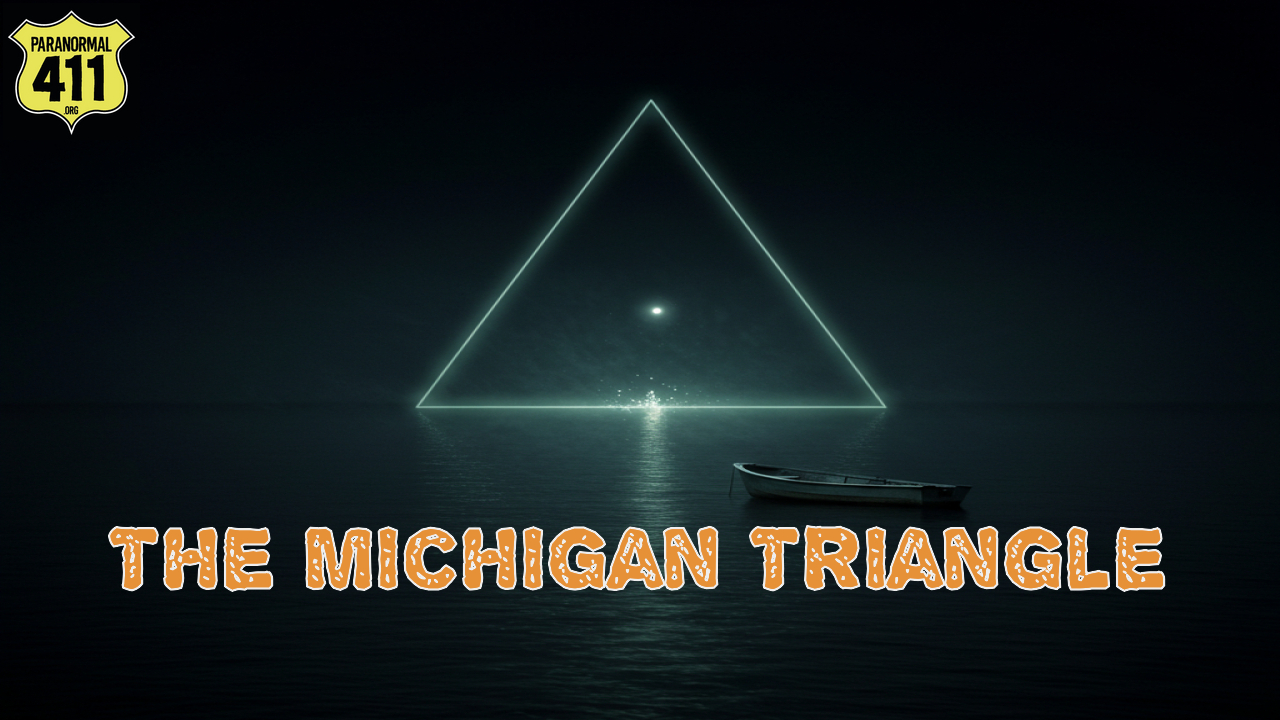
The Michigan Triangle is a legendary area in Lake Michigan where a number of unexplained disappearances of ships, planes, and people have occurred. The triangle is roughly defined by a line connecting Ludington, Michigan, to Manitowoc, Wisconsin, then down to Benton Harbor, Michigan, and back to Ludington.
Le Griffon (1679)
The Le Griffon, a barque-built vessel, holds the unfortunate distinction of being one of the first recorded disappearances in the Great Lakes, and a prominent mystery within the Michigan Triangle. Constructed under the orders of French explorer René-Robert Cavelier, Sieur de La Salle, Le Griffon was intended to be a key part of a larger expedition to explore the upper Great Lakes and the Mississippi River. In August 1679, Le Griffon set sail on its maiden voyage, navigating Lake Erie, Lake Huron, and ultimately reaching Green Bay on Lake Michigan. After acquiring a load of furs, the ship and a small crew began the return journey eastward.
Le Griffon departed Green Bay in September 1679, heading towards Niagara. La Salle, who was not on board at the time, had instructed the crew to sail to a designated location while he continued his explorations. The ship was carrying a valuable cargo of furs, essential for financing La Salle’s ambitious plans. Shortly after its departure, Le Griffon vanished. No distress signals were ever received, and no confirmed wreckage has ever been definitively identified, despite numerous searches and claims over the centuries. The loss of the ship and its cargo was a severe blow to La Salle’s expedition, disrupting his supply lines and financial resources.
The circumstances surrounding Le Griffon’s disappearance have given rise to various theories, none of which have been conclusively proven. One prevailing theory suggests that the ship was caught in a severe storm, a common hazard on the Great Lakes, and foundered. The unpredictable and often violent weather patterns of Lake Michigan could have easily overwhelmed a vessel of that era. Another theory posits that the crew may have mutinied, seizing the valuable cargo and abandoning the ship or scuttling it to cover their tracks.
A third theory involves sabotage or attack by rival fur traders or Indigenous groups. Competition for the lucrative fur trade was fierce, and some historians speculate that rival factions may have sought to eliminate Le Griffon and its valuable cargo. Additionally, tensions between European explorers and some Indigenous tribes were sometimes high, and it’s possible the ship was attacked. The lack of any surviving crew members or wreckage has made it impossible to determine the true cause.
The mystery of Le Griffon continues to captivate historians and maritime enthusiasts. It represents one of the earliest and most enduring enigmas of the Great Lakes, symbolizing the perils and uncertainties of early exploration and trade in the region. The disappearance of Le Griffon remains a significant part of the lore surrounding the Michigan Triangle, fueling speculation about the forces at play in this mysterious body of water.
Thomas Hume (1891)
The Thomas Hume was a three-masted schooner that disappeared in Lake Michigan in May 1891. Built in Manitowoc, Wisconsin, the Hume was a typical vessel of its time, used to transport goods across the Great Lakes, particularly lumber. On its final voyage, the Thomas Hume was sailing from Chicago, Illinois, bound for Muskegon, Michigan. The ship was carrying no cargo, making it lighter and potentially more susceptible to the unpredictable weather conditions that can arise on the Great Lakes.
The Thomas Hume was sailing in company with another schooner, the Rouse Simmons, which would later become famous as the “Christmas Tree Ship.” The two vessels encountered a sudden and severe squall. The Rouse Simmons, recognizing the danger, decided to turn back to Chicago to seek shelter from the storm. The Thomas Hume, however, continued on its course towards Muskegon. This decision proved to be fateful, as the Thomas Hume was never seen again.
Unlike some other disappearances, the Thomas Hume did not send out any distress signals or indicate any problems before vanishing. The suddenness of its disappearance, coupled with the lack of any wreckage or debris, added to the mystery. The crew of six sailors was lost along with the ship. The absence of any survivors meant that there were no firsthand accounts of what might have happened, leaving investigators and historians to speculate about the cause.
Several theories have been proposed to explain the Thomas Hume’s disappearance. The most likely explanation is that the ship was overwhelmed by the storm. Lake Michigan is known for its ability to generate powerful and sudden storms, which can create large waves and strong winds. A ship like the Thomas Hume, even if well-built, could have been capsized or broken apart by such conditions. Another possibility is that the ship struck a submerged obstacle or suffered a structural failure, causing it to sink rapidly.
In 2006, the wreck of the Thomas Hume was discovered in relatively good condition at the bottom of Lake Michigan. The discovery provided some closure to the mystery, but it also raised new questions. The ship’s condition suggested that it had not been violently destroyed, leading some to speculate that it may have sunk relatively intact. However, the discovery did not explain why the ship sank or what happened to the crew. The Thomas Hume remains one of the more perplexing disappearances in the history of the Great Lakes, a testament to the lake’s power and unpredictability.
Rosa Belle (1921)
The Rosa Belle was a two-masted schooner that was found capsized in Lake Michigan in 1921. This incident is particularly mysterious due to the circumstances in which the ship was found and the complete disappearance of its crew. The Rosa Belle was known for transporting materials to the House of David, a religious community located in Benton Harbor, Michigan. The ship had a history of incidents, having been found capsized twice before, adding to the intrigue surrounding its final fate.
In 1921, the Rosa Belle was discovered floating upside down in Lake Michigan. The condition of the ship indicated that it had been involved in some kind of collision. There were signs of damage that suggested an impact with another vessel. However, what made this incident so unusual was that no other ships in the area reported any kind of collision. This lack of corroborating evidence raised many questions and fueled speculation about what might have actually occurred.
Adding to the mystery was the complete absence of the crew. The entire crew of the Rosa Belle had vanished without a trace. There were no bodies found, and no debris from the ship that might have indicated their fate. This complete disappearance of the crew is one of the most perplexing aspects of the incident. It suggested that whatever happened to the Rosa Belle, it happened quickly and catastrophically, leaving the crew with no chance to escape or signal for help.
One of the more intriguing details surrounding the Rosa Belle involves its captain. According to some accounts, the captain had a premonition or a feeling of unease about the voyage. He reportedly refused to board the ship, sensing that something was wrong. This adds a layer of the unexplained to the story, with some suggesting that the captain’s intuition may have been a warning of the impending disaster.
The disappearance of the Rosa Belle and its crew remains one of the unsolved mysteries of the Michigan Triangle. The lack of any clear explanation, the signs of a collision without another vessel involved, and the complete disappearance of the crew have led to much speculation. The incident has been attributed to everything from unusual weather phenomena to more mysterious and unexplained forces. The story of the Rosa Belle continues to be a source of fascination and speculation, contributing to the lore of the Michigan Triangle.
Captain George R. Donner (1937)
The disappearance of Captain George R. Donner in 1937 is a particularly baffling case within the Michigan Triangle. Captain Donner was the master of the coal freighter O.M. McFarland. The circumstances of his disappearance are strange because he vanished from his locked cabin while the ship was sailing on Lake Michigan. This incident is unique because it doesn’t involve the disappearance of an entire ship, but rather a single individual under highly unusual conditions.
On the day of his disappearance, Captain Donner had retired to his cabin, which he locked from the inside. He instructed the crew to wake him when the ship was approaching its destination, Port Washington, Wisconsin. The O.M. McFarland was navigating through ice floes on Lake Michigan at the time. The crew proceeded with their duties, unaware that anything was amiss. It was a seemingly routine voyage, with no indication of any impending trouble or danger.
When the crew went to wake Captain Donner, they found his cabin door locked. After receiving no response to their knocks, they became concerned and eventually broke down the door. To their astonishment, Captain Donner was not in the cabin. A thorough search of the entire ship was conducted, but there was no sign of him. The crew was perplexed and alarmed by the captain’s sudden and inexplicable disappearance.
The investigation into Captain Donner’s disappearance yielded no clear answers. The cabin door was locked from the inside, indicating that he had not left through the door. The cabin had two portholes, but Captain Donner was too large to have fit through them. There were no signs of a struggle or any indication of foul play. Captain Donner was not known to be depressed or suicidal, further deepening the mystery.
The disappearance of Captain Donner remains a mystery to this day. It is difficult to explain how a person could vanish from a locked room on a ship in the middle of a lake. Theories range from an accident or a medical event to more speculative explanations involving the paranormal. The case of Captain Donner is often cited as one of the most inexplicable incidents associated with the Michigan Triangle, highlighting the strange and mysterious events that have occurred in this region.
Northwest Airlines Flight 2501 (1950)
Northwest Airlines Flight 2501 was a Douglas DC-4 aircraft that disappeared over Lake Michigan on June 23, 1950. The flight was en route from New York City to Minneapolis, Minnesota, carrying 55 passengers and three crew members. This incident is significant not only for the loss of life but also for the complete disappearance of the main wreckage of the aircraft, despite extensive search efforts. The disappearance of Flight 2501 is one of the most well-known aviation mysteries associated with the Michigan Triangle.
The flight progressed normally for much of its journey, with routine communication between the pilots and air traffic control. As the aircraft approached Lake Michigan, the pilots requested a change in altitude due to reported thunderstorms in the area. This was a common procedure for pilots at the time, as radar technology was not as advanced as it is today. The last known communication from Flight 2501 was a request to descend to a lower altitude.
Shortly after this last communication, Flight 2501 disappeared from radar. Air traffic controllers were unable to re-establish contact with the aircraft. An extensive search and rescue operation was launched, involving the Coast Guard, Navy, and civilian aircraft. In the days following the disappearance, small pieces of debris, including fragments of the aircraft, upholstery, and human remains, were found floating on the surface of Lake Michigan. However, the main wreckage of the plane was never located.
The lack of a complete wreckage has made it difficult to determine the exact cause of the crash. The prevailing theory is that the aircraft encountered severe turbulence and thunderstorms, which led to a catastrophic structural failure. The rapid disintegration of the aircraft would explain the wide dispersal of the debris field and the difficulty in locating the main wreckage. However, other theories have been proposed, including pilot error, mechanical failure, and even more speculative explanations involving unusual phenomena.
The disappearance of Flight 2501 remains a haunting mystery. The large loss of life, the lack of a definitive explanation, and the enduring mystery of the missing wreckage have made this incident a significant part of the lore surrounding the Michigan Triangle. The case continues to be studied and investigated, with ongoing efforts to locate the main wreckage and provide closure to the families of the victims. The story of Flight 2501 serves as a reminder of the unpredictable nature of air travel and the enduring power of the mysteries of Lake Michigan.
Theories and Explanations:
Many theories attempt to explain the mysteries of the Michigan Triangle, ranging from natural causes to the paranormal:
Natural Phenomena:
Sudden Storms and Rogue Waves: Lake Michigan is known for its unpredictable and severe weather changes, capable of producing large and dangerous waves.
Strong Currents: The lake has strong and complex currents that could overwhelm vessels.
Magnetic Anomalies: Some suggest that unusual magnetic fields in the area could interfere with navigation equipment. Lake Michigan has a westward magnetic declination of four to five degrees on average.
Lake Effect Snow: Heavy and sudden snowfall can severely reduce visibility for both ships and aircraft.
Paranormal and Unexplained:
UFOs and USOs (Unidentified Submerged Objects): There have been alleged sightings of strange objects in the sky and water in the vicinity of the triangle, particularly around the time of Flight 2501’s disappearance.
Energy Vortexes: Some believe the triangle is a negative energy vortex, a place emitting malevolent energy. This theory is sometimes linked to ley lines, one of which allegedly runs down the middle of Lake Michigan.
North American Stonehenge”: The discovery of a prehistoric stone structure resembling Stonehenge at the bottom of Lake Michigan in 2007 has fueled some paranormal theories.
Discovery: The structure was found in 2007 by Mark Holley, an underwater archaeology professor at Northwestern Michigan University, while he was searching for shipwrecks in Grand Traverse Bay.
Description: The site includes a series of stones arranged in a circle, similar to England’s Stonehenge, though smaller. One notable stone appears to have a carving of a mastodon, an extinct elephant-like animal. The stones are estimated to be around 9,000 years old, significantly predating the construction of Stonehenge.
Location: The underwater structure is located in Grand Traverse Bay, which is part of Lake Michigan, off the coast of Traverse City, Michigan. To protect the site from damage, the precise location has not been widely publicized. Holley first revealed the site to the Grand Traverse Band of Ottawa and Chippewa tribes.
Age and Context: The age of the stones suggests they were placed there after the last Ice Age, at a time when the lakebed was not yet submerged.
Purpose: The purpose of the structure is still a matter of speculation. Some researchers suggest it may have been a hunting structure, similar to caribou drive lanes found elsewhere, while others propose it may have had a ceremonial or calendrical function.
The stone formation consists of an outer ring, approximately 40 feet in diameter, and an inner ring, measuring about 20 feet. The stones themselves, formed from local granite, vary in size.
Let’s face it—we’re drawn to mysteries because they humble us. The Michigan Triangle isn’t just a story; it’s a riddle that refuses to die. In an age of satellites and sonar, how does a single stretch of Lake Michigan still hide planes, ships, and captains like George Donner without a trace? Why do structures that resemble ancient monuments lurk beneath its waves?
The truth is, the Triangle doesn’t play by our rules. It mocks logic. It thrives in the gaps—between storm explanations and UFO rumors, between history books and campfire tales. Maybe that’s its lesson: not every question needs an answer. Some exist to remind us that wonder is just as vital as facts.
So, let’s end not with closure, but with curiosity. Let the vanishings of Flight 2501 and the Rosabelle linger in your mind. Let the lake’s secrets whisper: What if? After all, as Lovecraft said, fear of the unknown is humanity’s oldest emotion. But so is wonder. And wonder? That’s where the next chapter begins.

 5 True Ghost Stories of Knoxville Tennessee
5 True Ghost Stories of Knoxville Tennessee  The Minds Last Stand: The Third Man Factor
The Minds Last Stand: The Third Man Factor  Shadow Figures: They’ve Been Watching You All along
Shadow Figures: They’ve Been Watching You All along  The Bigfoot Mystery of Mt Saint Helens
The Bigfoot Mystery of Mt Saint Helens  Bigfoot’s Hidden Rage: Why some Encounters turn Deadly
Bigfoot’s Hidden Rage: Why some Encounters turn Deadly  Cheating Death at the Quantum Level
Cheating Death at the Quantum Level  Into the Unknown: Exploring the Michigan Triangle
Into the Unknown: Exploring the Michigan Triangle  The Shag Harbour UFO Incident
The Shag Harbour UFO Incident